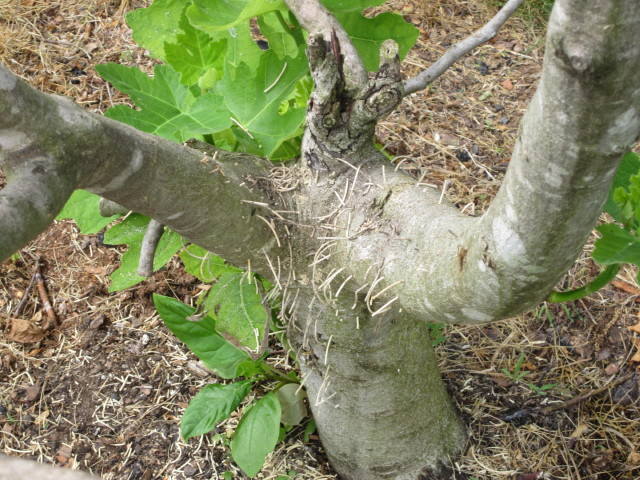Backyard fig gardeners may be seeing toothpick-like spines protruding from their beloved fig trees. This is a sign that ambrosia beetles are boring into the tree’s stems.
Ambrosia beetles commonly attack weak or dying plants, such as fig trees that were damaged by the subzero temperatures last January.
Healthy trees can withstand attack
If the plant is vigorous enough, the beetles may be drowned or forced out by heavy sap flow. If the host is weak or not producing large amounts of sap, the attack will be successful.
Ambrosia beetle infestations can usually be identified by dust protruding from holes bored by females excavating their galleries. The strings or spines of the “boring dust” may be up to 2 to 3 inches long, but are fragile and easily broken off by wind or rain.
The beetles are active during warm periods of the year, but most adult activity is observed in early March. They mate, lay eggs and rear young within the tunnels excavated by the females. There can be several generations in a year. They breed in stems that are 2 to 30 cm in diameter, although smaller branches are most commonly attacked first.
They like other trees, too
All life stages can be found inside the galleries. When mature, the females leave infested plants and fly to new host plants. And they don’t just attack fig trees. Ambrosia beetles are known to attack pecan, peach, plum, cherry, persimmon, oak, elm, sweet gum, magnolia, buckeye, crape myrtle and maples, too.
Adults and larvae bore into twigs, branches or small trunks of woody host plants, excavate a system of tunnels in the wood or pith, and introduce a symbiotic ambrosial fungus. The beetles are highly specialized and feed on fungi they cultivate on the walls of the galleries. Both the adults and larvae feed on the fungus. The introduced fungus and tunnel excavating damage and clog the plant’s xylem (tissues that transport water), ultimately killing all or part of the plant.
Prune or spray before adults emerge
Controlling ambrosia beetles is difficult. Heavily infested plants or plant stems should be pruned out and burned immediately. Insecticide sprays are of limited value after a plant is infested, especially if the host plant is already very weak or dying.
Insecticides must be applied before the adults emerge and move on to attack other plants. Insecticide applied to the trunks of surrounding plants may help reduce the spread of infestations to other susceptible hosts.
Using proper horticultural practices to keep plants healthy will help prevent future attacks. This includes properly fertilizing, maintaining proper soil pH and keeping the soil moist.
For more information on growing home garden figs in Georgia, see Extension publication C945 at extension.uga.edu/publications/detail.cfm?number=C945.








